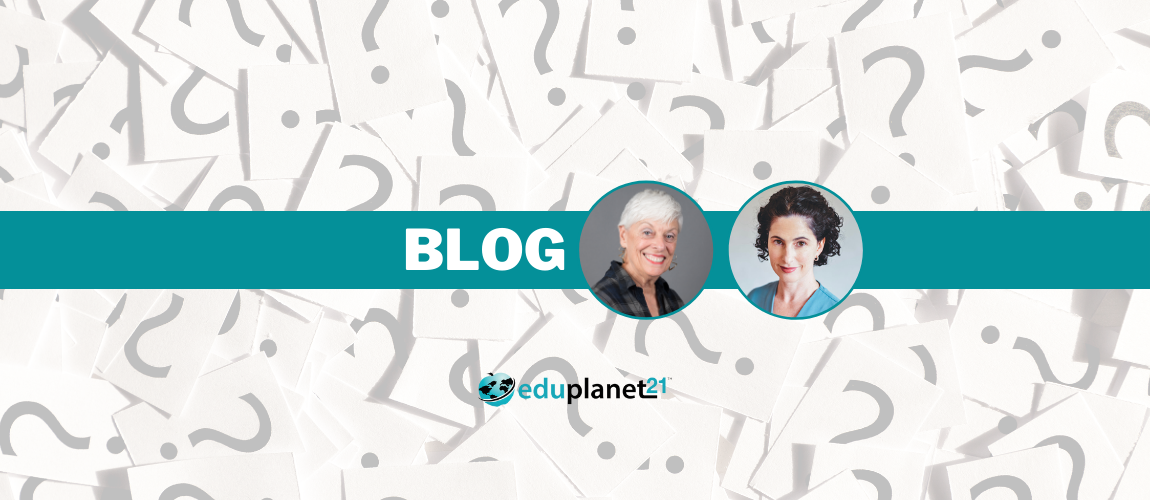As education consultants working with countless school administrators and educators, we field many personalized learning questions. Some are asked so frequently, in fact, that we dedicated an entire blog post to answering them for the masses.
Question #1: What is personalized learning, really?
There are so many definitions out there that it is difficult to get through the noise. In responses to Dan Meyer and Annie Murphy Paul, we offer that personalized learning is personal — honoring the student in front of you as a partner, co-creator, and community member. Personalized learning is a progressively student-driven model where students deeply engage in meaningful, authentic, and rigorous challenges to demonstrate desired outcomes.
One of the examples that we love comes from Henry County Schools in Georgia where they worked with their community to clarify what Personalized Learning is. They built what they affectionately nicknamed the “parthenon.”
What we also found incredibly impactful was their visual to dispel some of the misconceptions that they have heard voiced from various stakeholders in the community.
Question #2: How do we make sure the “juice” of PL is worth the “squeeze?” How can we increase personalized learning without sacrificing achievement? Why is this good for kids?
Personalized learning is truly about equity — honoring the person in front of you. Manchester Public Schools in Connecticut made a powerful statement on “the why” for personalized learning:
“As a result of a substantial achievement gap in our District, we believe that a transformational shift to personalized learning will change both our culture, expectations, opportunities, and outcomes for every child and also inform and transform our adult communities in the same manner.”
We also must ensure that the promise of personalized learning results in a more growth-oriented experience by making certain that there is:
- equitable access to resources and opportunities in school and community
- an understanding and acceptance of cultural differences
- relevant and rigorous curriculum
- a culture of trust as we expect the best of one another
- remaining open as we engage in innovation and self-discovery
- an opportunity to become an advocate for learning, not only for the students but for all members of the personalized learning community
- dedication to encouraging the dreams and passions that learning can inspire
Question #3: How do we get our colleagues to share our desire for personalizing learning?
- It is really important to show what it looks like, feels like and sounds like.
It is always better when you can point to examples within the school division. In addition, you might want to look at two powerful examples: Blueprint and Design39. - Provide various entry points of how teachers can begin.
Make certain that everyone understands that we are progressively moving toward personalizing. It is not a race but a journey. Check out the seven elements of Personalized Learning in this article from Education Leadership. - Create and sustain a culture dedicated to growing innovative ideas in empowering environments.
That means we operate with the mindset of entrepreneurs, engineers, and artists. We allow ourselves to take responsible risks. We become critical friends to one another — critical meaning that we are able to thoughtfully critique because we are a friend of everyone’s success.
Question #4: How do we communicate to our families about what it means to shift to a personalized learning environment?
In a personalized learning classroom, the role of the student clearly shifts. They have more:
- freedom to shape inquiries and ideas
- responsibility with self-direction and managing the heavy lifting of investigating, generating, reconceptualizing, and revising
We need to include parents and caretakers in our conversations about why we are moving toward personalizing learning. A good catalyst for the conversation could be the inspiring TED talk by Simon Sinek or perhaps one of the blogs on the Learning Personalized site.
What is most significant is that the content inspires a good and thoughtful conversation and that the process of learning how to listen to one another with understanding and empathy paves the way for thinking flexibly as people share their concerns and excitement.
Another important aspect of communication with parents and caretakers is to share student work so that they see the quality of how students demonstrate what they know and are able to do. Avoid trying to persuade. Rather, let the work and the voice of students be the tour guide for the changes.
Question #5: Why have we connected the Habits of Mind with our approach to personalized learning?
As we design work with our students, we also need to pay attention to the ways that they are developing emotional, social, and project-based skills that will remain as important in school as they will in their lives beyond schooling. The 16 habits are a set of dispositions that students will need as they become more self-directed and thoughtful in their learning.
The habits represent a key to effective thinking. Students develop the habits through practice as they are challenged to use their voice to engage in the work of school; join others in the co-creation of project designs; learn how to use the expertise of others as they socially construct deeper meaning in their learning; discover who they are and who they are becoming as they reflect on their learning.
5 Most Frequently Asked Personalized Learning Questions We Receive and Our Responses was originally posted on Learning Personalized.
 Login
Login
